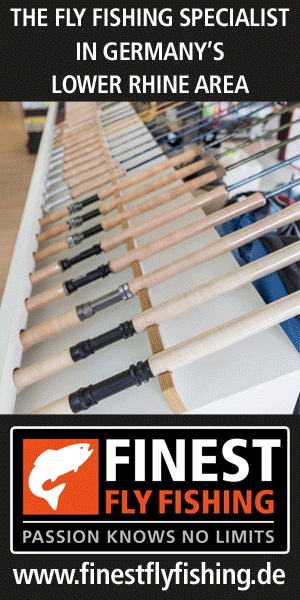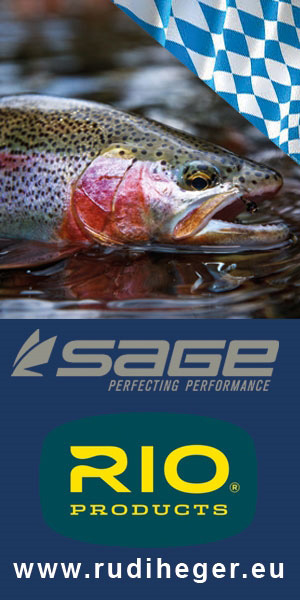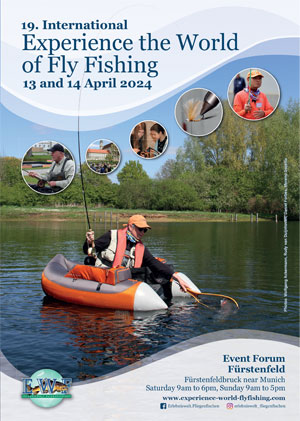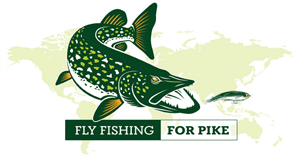
When one takes a look at the impressive list of innovations that have been introduced by Scientific Anglers, it is easy to recognize that this firm not only represents the rich history of fly fishing, but also the future of this pastime. No other firm has added so many useful and advanced products to the fly fishing market like Scientific Anglers; products that have made fly fishing easier and within reach of much larger groups of people.
Text and pictures by Rudy van Duijnhoven
The fishing buddies and friends Leon Martuch, Clare Harris and Paul Rottiers started the firm Scientific Anglers in 1945 in Midlands, Michigan. Under the logo of Scientific Anglers Martuch and the others introduced the first plastic coated, tapered fly lines around the year 1952. Until that time, only silk lines were used in fly fishing, lines that had to be dried, cleaned and greased several times during the day, a time consuming piece of labor. In 1954 the firm introduced the Air Cel fly line, a line that is considered by many to be the first modern, floating fly line. The very tiny air bubbles that SA managed to work into the coating of the Air Cel Supreme fly lines from 1959 onward, was leading towards a revolution in the way fly lines floated on the water surface. These Air Cel lines were in 1960 followed by the Wet Cel lines, the first sinking fly lines of our modern time.

In 1963 Scientific Anglers introduced special tapered fly lines for fly fishing in salt water and for casting big streamers and poppers (Bass Bug tapers). The short belly and steep tapers of these lines made it possible to cast flies that have much more wind resistance than the common dry and wet flies. At that moment there were already fly fishers and competition casters that used shooting heads (fly lines of only nine to twelve meters in length to which a very thin running line is attached), for these people SA introduced in 1966 the first running lines under the Air Cel label.
Well balanced outfit
In 1969 Scientific Anglers introduced the first balanced rod, reel and line system. During that time the first System fly reels came on the market, in all the different models these fly reels are among the best fly reels sold in the world at that moment. Scientific Anglers was also the first company that experimented with the use of tungsten in fly lines. The fly lines that held this material from 1980 onward, did sink faster than their counterparts that use lead in the coating and they were more environment friendly. Around the year 1986 the Mastery Learning System was introduced and this was four years later followed by the introduction of the Mastery Series of fly lines. Even today this range represents the best that SA has to offer in terms of fly lines and expertise.

Two years after the introduction of the Mastery Learning System, fly lines of SA saw the light that used silicone in the coating to make them more slick, a technology that is still used today and which is copied by many other producers of fly lines. More than ten years later SA improved this technique even further with the introduction of AST, the Advanced Shooting Technology. Bringing lines on the market with this AST meant the start of a ‘race’ among fly line producers to make the slickest fly lines in the world. The patented AST is still the standard against which other fly lines are compared in terms of slickness and durability.
See through advancement
Around this period the first see through, Monocore fly lines came on the market too, these were slow sinking fly lines that were great for presenting flies just below the surface of trout reservoirs and lakes to very spooky fish. At the start of the new century XTS gel spun backing was added to the range, with this dyneema backing line fly fishers could add up to 75 percent more backing to their reels while at the same time the material is stronger than steel in the same diameters.
The System X fly boxes came on the market in 2004 and the innovative, water proof and see through design was a success right from the start. With the L2L system of a year later, SA made connecting fly lines and leaders (plus changing the latter) much easier. Loop to loop connections and Needle or Nail Knots have – for the most part – become a thing of the past with this L2L system.
Minerals
Scientific Anglers has been a division of the international concern 3M for many years now. The history of this firm dates even further back than that of SA, she was erected in 1902 in Two Harbors, a city on the shores of Lake Superior in the state of Minnesota. Five businessmen decided to dig for minerals in a mine for the production of sandpaper. The quality of the minerals from the mine was not good enough however and the firm moved after three years to the nearby town of Duluth for the production of sandpaper. It took a couple of years before the firm could produce quality products. New investors put money into 3M and in 1910 came another move to St. Paul. Due to technical and marketing innovations the firm had more success now and from 1916 onward 3M paid a first dividend of six dollar-cents per share…

With the introduction of clear tape, reflecting foil, audio tapes, video tapes, etc., the firm went through a strong growth and from the eighties onward the firm was represented in just about every country in the world. The turnover of 3M was in 2004 for the first time more than twenty billion dollar!
Sharky fly lines
With the introduction in 2007 of the Sharkskin fly lines, SA made another major jump forward in terms of the picking up of the water, casting and presenting the artificial fly with a fly line. The fly line was the talk of the three days at the Fly Fishing Retailer Show in Denver that year, also because there was a suggested retail price for this line of 100 dollar. Most of the quality fly lines in the USA will cost between 60 and 70 dollars and is this new line worth the extra money, that was the main question for most of the visitors to this trade show. By adding a very fine structure to the surface of the fly line, SA has succeeded in imitating the way some insects walk on the water in the outer layer of the fly line. The Sharkskin fly lines are lying higher on the water, because of which taking the line off the water, as well as making roll, switch and Spey casts, will become much easier. Because of the microscopic structure the line also has less resistance in the guides of a fly rod, so that longer casts are possible too.

Scientific Anglers claims furthermore that the new structure also makes the line last two to three times longer, with which the higher price of the new Sharkskin fly line will become a lot easier to digest. The sharkskin structure of the line reduces the amount of light that is reflected by the line as well, so that spooky fish can be cast to with less chance of them taking the fins. Fly lines with a special structure have been on the market for a number of years, but this Sharkskin technology could well mean the definite break through on the market of this technology. Scientific anglers has done with this line at least take a good step forward towards a healthy future.
Visiting
After the trade show in Denver in that year, I was able to make a visit to the company in Michigan together with Peter Elberse of Elberse International (the distributor of Scientific Anglers in the Netherlands, Germany and Austria at that time); we also added two days of fishing for Pacific salmon to this visit. After we were picked up by John A. Noble from the small, local airport of Midland in Michigan, we enjoyed a warm welcome at Scientific Anglers. At the entrance room there were replicas of tarpon and largemouth bass hanging on the wall, furthermore there were several glass cases with old fly lines and other materials used for fly fishing many years ago. For understandable reasons, the people could not show us the production process, the making of the fly lines by SA is done with the use of different patents and special production methods. Dan Vossen joined us during lunch and when Bruce Richards had arrived as well, we could leave later in the afternoon for a deserted ski-resort where we would stay for two nights. The Pacific salmon in the state of Michigan swim up the rivers from the huge lakes in this state in order to take care of future generations. As it turned out the fish proved to be a lot more difficult to catch than the salmon that one will come across in the western states of Canada and the USA. We saw a lot of king salmon, had a number of half hearted attacks and fish follow our flies, but only Peter managed to land to salmon.

Bruce Richards is one of the leading persons behind the Casting Instructor Program of the Federation of Fly Fishers in the USA, he is a member of the Board of Governors there, he was a co-author for different books, he gives demonstrations and casting lessons at shows and was one of the leading scientist behind the Casting Analyzer that Sage introduced to the market some years ago. Next to that he is also one of the kindest men in the fly fishing industry. In the last few years he was able to show his many talents at shows like the EWF near Munich in Europe too.
Orvis has taken over Scientific Anglers in 2013 and the products are now distributed in many European countries through wholesale company Flyfish Europe in Norway.
Sources: websites 3M USA en NL.

Websites: www.scientificanglers.com and www.flyfisheurope.com.






